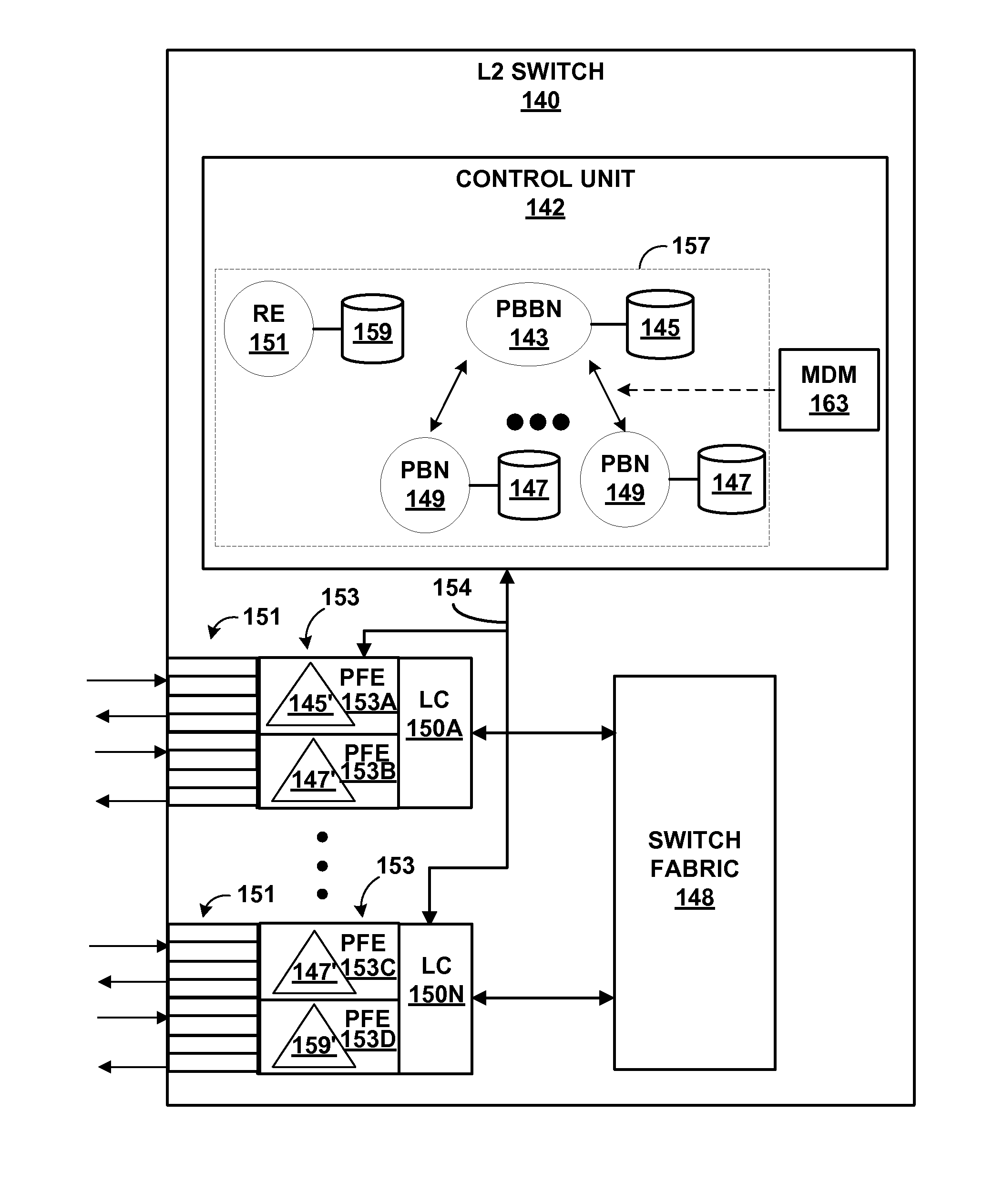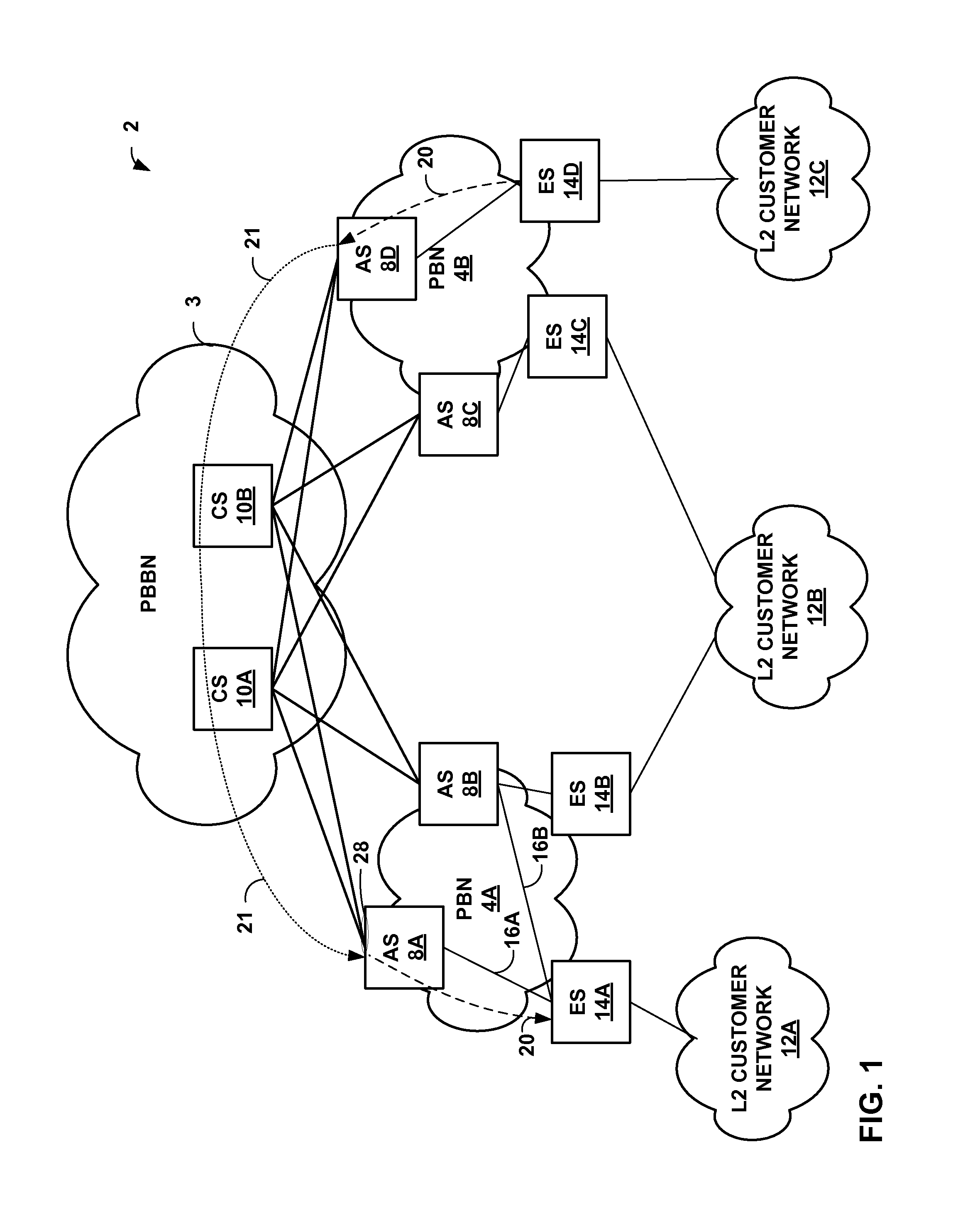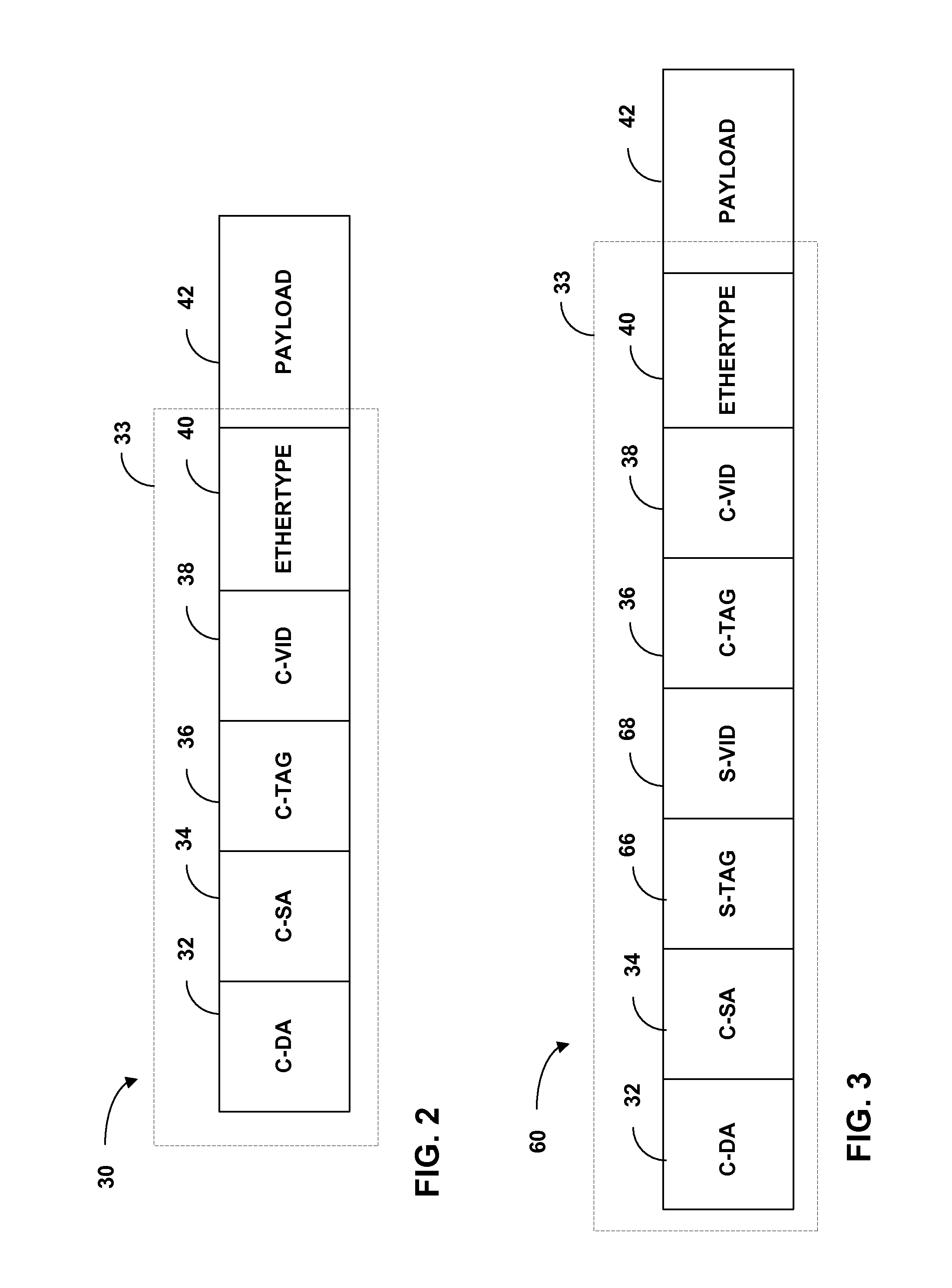Address learning in a layer two bridging network
a layer two, address learning technology, applied in the field of electronic computer networks, can solve the problem that the address information of the layer two network may be leaked between the components of the routing instance in a constrained manner, and achieve the effect of increasing the data forwarding ra
- Summary
- Abstract
- Description
- Claims
- Application Information
AI Technical Summary
Benefits of technology
Problems solved by technology
Method used
Image
Examples
Embodiment Construction
[0020]FIG. 1 is a block diagram illustrating an example network 2 in which a Provider Backbone Bridged Network (PBBN) 3 provides L2 connectivity between multiple provider bridge networks (PBN) 4A, 4B (collectively, “PBNs 4”). Each of PBNs 4 represents a component and infrastructure of a service provider that provide bridged local area network services to L2 customer networks. Each PBN 4 provides one or more service VLANs (“S-VLANS) to service and isolate L2 traffic from L2 customer networks 12. PBNs 4 may be L2 bridging networks provided by the same network service provider or by one or more different service providers.
[0021]In the example of FIG. 1, each of PBNs 4 includes one or more access switches 6 that connect the PBN to core switches within PBBN 2. In the example of FIG. 1, access switch (AS) 8A an AS 8B provide L2 connectivity to core switches (CS) 10A, 10B. Similarly, AS 8C and AS 8D provide L2 connectivity to CS 10A and CS 10B. PBBN 3 is composed of a set of Backbone Edge ...
PUM
 Login to View More
Login to View More Abstract
Description
Claims
Application Information
 Login to View More
Login to View More - R&D
- Intellectual Property
- Life Sciences
- Materials
- Tech Scout
- Unparalleled Data Quality
- Higher Quality Content
- 60% Fewer Hallucinations
Browse by: Latest US Patents, China's latest patents, Technical Efficacy Thesaurus, Application Domain, Technology Topic, Popular Technical Reports.
© 2025 PatSnap. All rights reserved.Legal|Privacy policy|Modern Slavery Act Transparency Statement|Sitemap|About US| Contact US: help@patsnap.com



